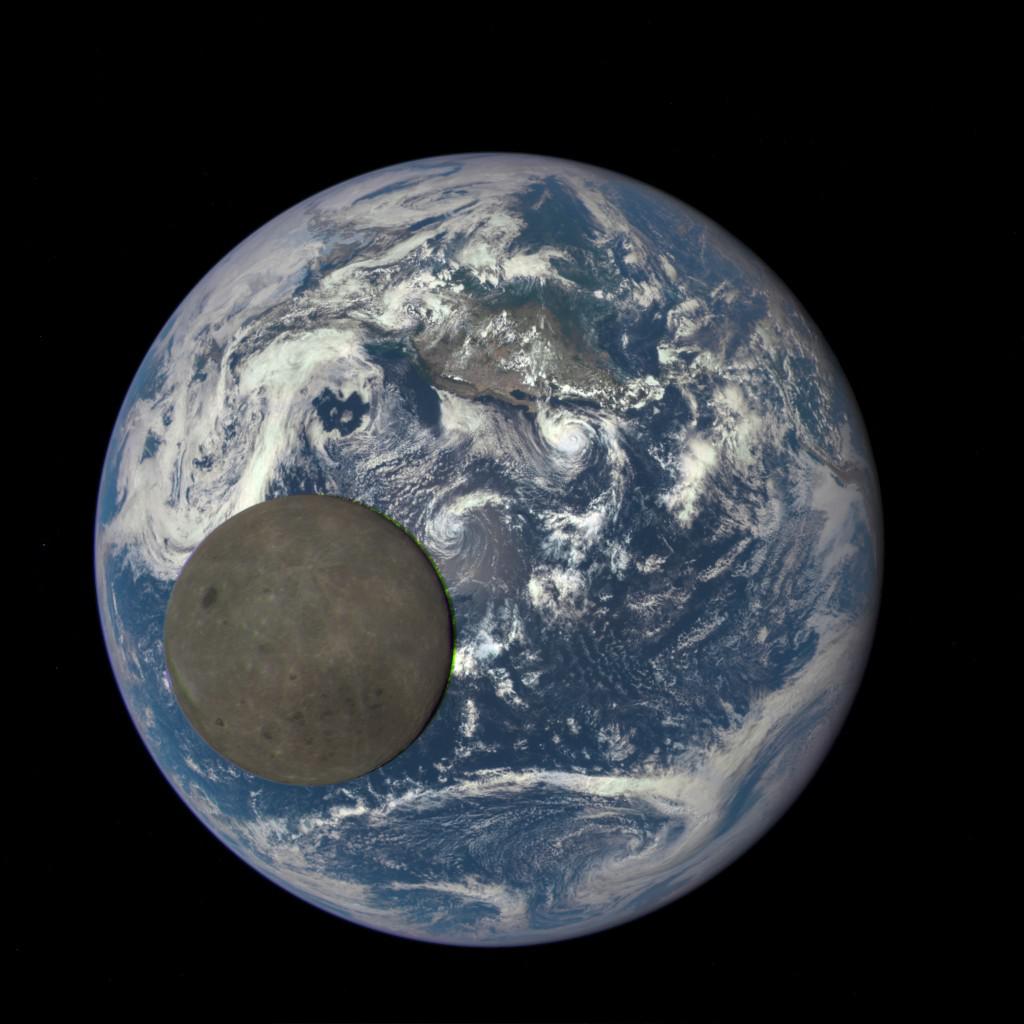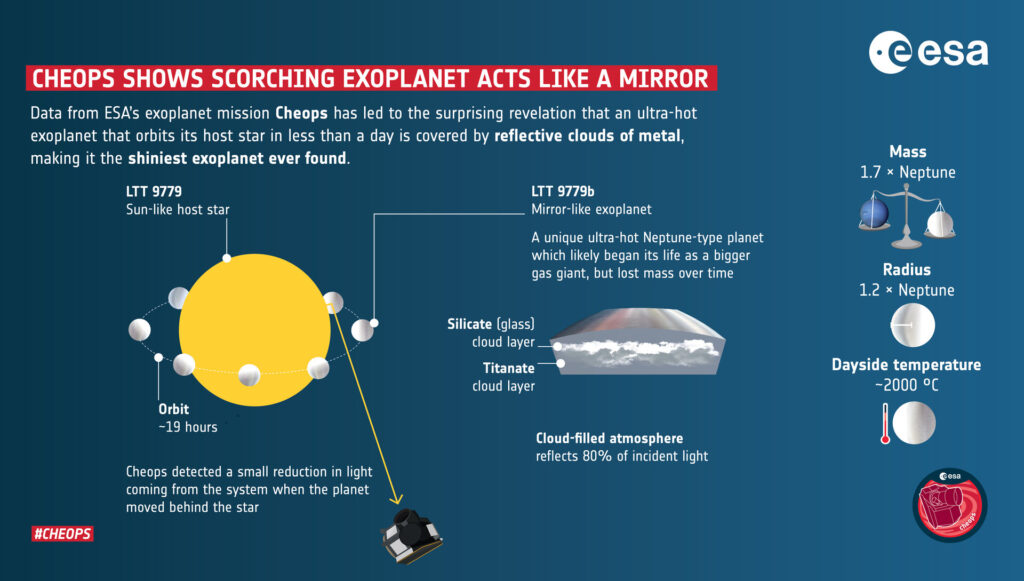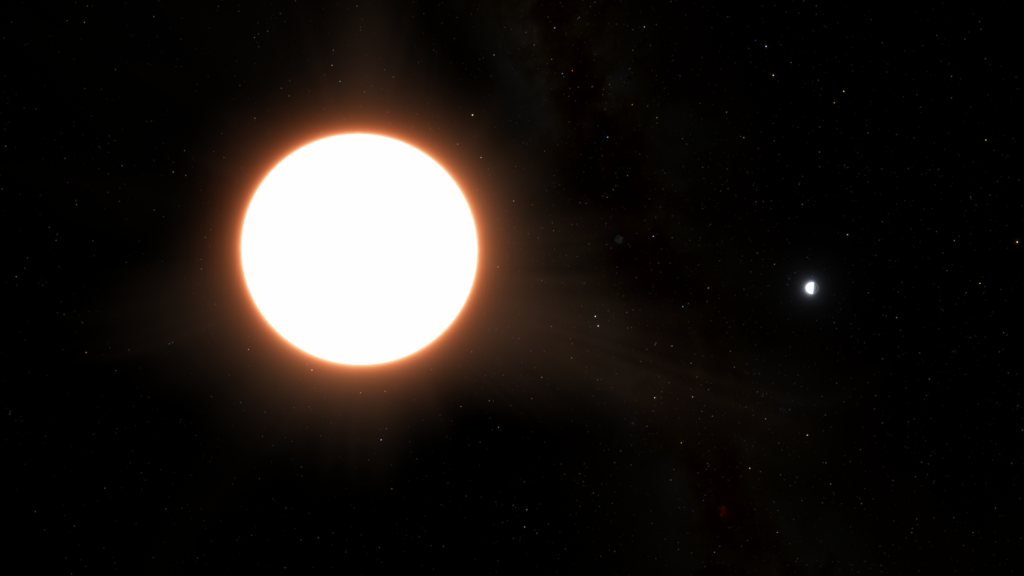After analyzing the data collected by the Cheops space telescope, astronomers have discovered a giant cosmic “mirror”: an ultra-hot exoplanet with metallic clouds that reflect most of the starlight.
What determines the brightness of the planets
Planets and their moons do not shine with their own light, but with light reflected from their surface. When looking at the night sky, it may seem that the Moon does it best. But in reality, its albedo (reflectivity index) is only 12%, while our Earth reflects over 30% of sunlight.

It is worth saying that most planets in general have a low albedo, either because they have an atmosphere that absorbs a lot of light, or because their surface is dark. The record holder is Venus, which has a powerful cloud cover reflecting about 75% of the sun’s light. Also, some icy moons of giant planets can boast of a high albedo.
However, apparently, this is still far from the limit. In a recent study, astronomers have managed to find a world that reflects over 80% of the light of its star. This is possible due to the fact that its surface is literally hidden by metallic clouds.
Impossible exoplanet
In 2020, the TESS space telescope discovered a new exoplanet, which received the designation LTT9779 b. It is an ultra hot Neptune. Its radius is 4.7 times, and its mass is 29 times greater than the radius and mass of the Earth. LTT9779 b makes one orbit around its star in just 19 hours. According to the Spitzer telescope, its daytime side is heated to a temperature of 2000 °C.

The discovery attracted the attention of astronomers by the fact that the orbit of LTT9779 b lies in the so-called “orbit of hot-Neptunes”. This is the name of the area near the star, in which there are practically no planets the size of Neptune — only large gas giants or barren super-Earths without an atmosphere. Scientists attribute this to the fact that at such a short distance from the star, insufficiently massive planets cannot hold their atmosphere and as a result, only a rocky core remains from them.
World with metallic clouds
To solve the mystery of LTT9779 b, scientists used the Cheops telescope. Its collected data show that the exoplanet has an unusually high albedo. It reflects about 80% of the light of its star, which indicates that it has a very powerful cloud cover.

This finding surprised astronomers very much. They believed that the atmosphere of LTT9779 b was too hot to possess any kind of clouds. During the subsequent analysis, they still managed to find a clue. The surface of ultra-hot Neptune is hidden by clouds consisting of a mixture of silicates and various metals, like titanium. In fact, they play the role of a giant mirror reflecting most of the starlight.
According to the researchers, the presence of metallic clouds may be a key factor ensuring the survival of LTT9779 b in the “hot-Neptune desert”. They reflect most of the incident light, contributing to the preservation of the atmosphere. All this makes LTT9779 b a very promising target for observations from both existing observatories and next-generation telescopes.
According to https://www.esa.int
Follow us on Twitter to get the most interesting space news in time
https://twitter.com/ust_magazine
